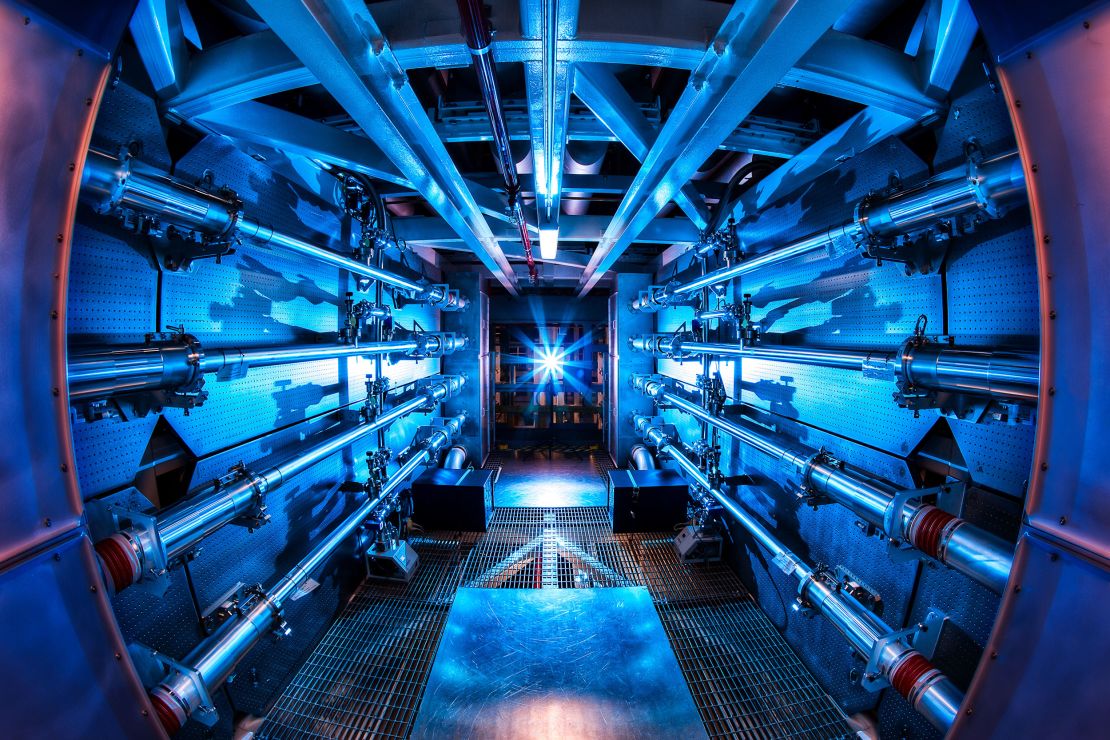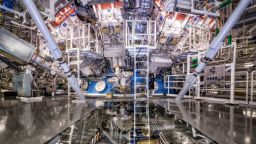CNN
—
The bustling city of Shanghai marks national celebrations with world-famous light shows, illuminating its skyscrapers with dazzling colors, like beacons of Chinese innovation.
It is here that scientists and engineers work around the clock to pursue the next big thing in global tech, from 6G internet and advanced AI to next-generation robotics. It’s also here, on an unassuming downtown street, a small start-up called Energy Singularity is working on something extraordinary: nuclear fusion energy.
US companies and industry experts are worried America is losing its decades-long lead in the race to master this near-limitless form of clean energy, as new fusion companies sprout across China, and Beijing outspends DC.
Nuclear fusion, the process that powers the sun and other stars, is painstakingly finicky to replicate on Earth. Many countries have achieved fusion reactions, but sustaining them for long enough to use in the real world remains elusive.
Mastering fusion is an enticing prospect that promises wealth and global influence to whichever country tames it first.

The prize of this energy is its sheer efficiency. A controlled fusion reaction releases around four million times more energy than burning coal, oil or gas, and four times more than fission, the kind of nuclear energy used today. It won’t be developed in time to fight climate change in this crucial decade, but it could be the solution to future warming.
The Chinese government is pouring money into the venture, putting an estimated $1 billion to $1.5 billion annually into fusion, according to Jean Paul Allain, who leads the US Energy Department’s Office of Fusion Energy Sciences. In comparison, the Biden administration has spent around $800 million a year.
“To me, what’s more important than the number, it’s actually how fast they’re doing this,” Allain told CNN.
Private businesses in both countries are optimistic, saying they can get fusion power on the grid by the mid-2030s, despite the enormous technical challenges that remain.
The US was among the world’s first to move on the futuristic gambit, working on fusion research in earnest since the early 1950s. China’s foray into fusion came later that decade. More recently, its pace has ratcheted up: Since 2015, China’s fusion patents have surged, and it now has more than any other country, according to industry data published by Nikkei.
Energy Singularity, the start-up in Shanghai, is just one example of China’s warp speed.
It built its own tokamak in the three years since it was established, faster than any comparable reactor has ever been built. A tokamak is a highly complex cylindrical or donut-shaped machine that heats hydrogen to extreme temperatures, forming a soup-like plasma in which the nuclear fusion reaction occurs.

For a fledgling company working on one of the world’s most difficult physics puzzles, Energy Singularity is incredibly optimistic. It has reason to be: It has received more than $112 million in private investment and it has also achieved a world first — its current tokamak is the only one to have used advanced magnets in a plasma experiment.
Known as high-temperature superconductors, the magnets are stronger than the copper ones used in older tokamaks. According to MIT scientists researching the same technology, they allow for smaller tokamaks that can generate as much fusion energy as larger ones, and they can better confine plasma.
The company is planning to build a second-generation tokamak to prove its methods are commercially viable by 2027, and it expects a third-gen device that can feed power to the grid before 2035, the company said.
In contrast, the tokamaks in the US are aging, said Andrew Holland, CEO of the Washington, DC-based Fusion Industry Association. As a result, the US relies on its allies’ machines in Japan, Europe and the UK to further its research.
Holland pointed to a new $570 million fusion research park in eastern China under construction, called CRAFT, on track to be completed next year.
“We don’t have anything like that,” he told CNN. “The Princeton Platinum Physics Laboratory has been upgrading its tokamak for 10 years now. The other operating tokamak in the United States, the DIII-D, is a 30-year-old machine. There’s no modern fusion facilities at American national labs.”
There’s a growing unease in the US industry that China is beating America at its own game. Some of the next-generation tokamaks China has built, or plans to, are essentially “copies” of US designs and use components that resemble those made in America, Holland said.
China’s state-funded BEST tokamak, which is expected to be completed in 2027, is a copy of one designed by Commonwealth Fusion Systems, Holland said, a company in Massachusetts working with MIT. The two designs feature the same kind of advanced magnets Energy Singularity is using.
Another machine being built by a private Chinese company looks very similar to a tokamak designed by the US company Helion, Holland said.
There is “a long history” of China copying American tech, he added.›
“They’re fast followers and then take the lead by dominating the supply chain,” Holland said, using solar panel technology as an example. “We’re aware of this and want to make sure that’s not the way it goes forward.”
CNN did not receive a reply from China’s National Energy Administration when asked whether state-funded fusion research had copied or been inspired by US designs.
Lasers vs. tokamaks
Nuclear fusion is a highly complex process that involves forcing together two nuclei that would normally repel. One way to do that is to turn up temperatures in a tokamak to the tune of 150 million degrees Celsius, 10 times that of the sun’s core.
When they bind, the nuclei let off a large amount of energy as heat, which can then be used to turn turbines and generate power.
The US has been a fusion leader for decades; it was the first nation to apply fusion energy in the real world — in a hydrogen bomb.
In the early 1950s, the US military tested a series of nuclear weapons in the Pacific Ocean that were “boosted” by gases that created a fusion reaction, resulting in an explosion 700 times the power of Hiroshima blast.
Sustaining nuclear fusion for long periods is much more challenging, and while China races ahead with its tokamaks, the US is finding an edge in other technology: lasers.
In late 2022, scientists at the Lawrence Livermore National Laboratory in California shot nearly 200 lasers at a cylinder holding a fuel capsule the size of a peppercorn, in the world’s first successful experiment to generate a net gain of fusion energy. That means more power came out of the process than was used to heat the capsule (though they didn’t count the energy needed to power the lasers).

There are yet more ways to achieve nuclear fusion, and the US is hedging its bets on a variety of technologies.
It’s not impossible that approach could pay off.
“We don’t know exactly which is going to be the best concept, and it may not be one,” said Melanie Windridge, a UK-based plasma physicist and CEO of Fusion Energy Insights, an industry monitoring organization. There may ultimately be several viable approaches for fusion power, she told CNN. “And then it will come down to costs and other factors in the longer term.”
But the tokamak is the best-researched concept, she said.
“Over time, it’s had the most research put into it, so it’s the most advanced in terms of the physics,” said Windridge. “And a lot of the private companies are building on that.”
With the money China is putting into research, the tokamak concept is rapidly evolving. China’s EAST tokamak in Hefei held plasma stable at 70 million degrees Celsius — five times hotter than the core of the sun — for more than 17 minutes, a world record and an objectively astonishing breakthrough.
Mikhail Maslov of the UK Atomic Energy Authority described it as an “important milestone,” adding that running long plasma pulses remains one of the biggest technical challenges to commercializing fusion energy.
While China’s government pours money into fusion, the US has attracted far more private investment. Globally, the private sector has spent $7 billion on fusion in the last three to four years, about 80% of which has been by US companies, the DOE’s Allain said.
“In the US, what you have is that entrepreneurial spirit of being able to really think outside the box and innovate and really address some of these gaps, not just in science, but also in the technology,” he said.
But if the Chinese government continues to invest more than $1 billion a year, that could soon eclipse US spending, even in the private sector.
And if those investments pay off, colorful celebrations in Shanghai will not only be powered by fusion, they will cast China in a whole new light.



